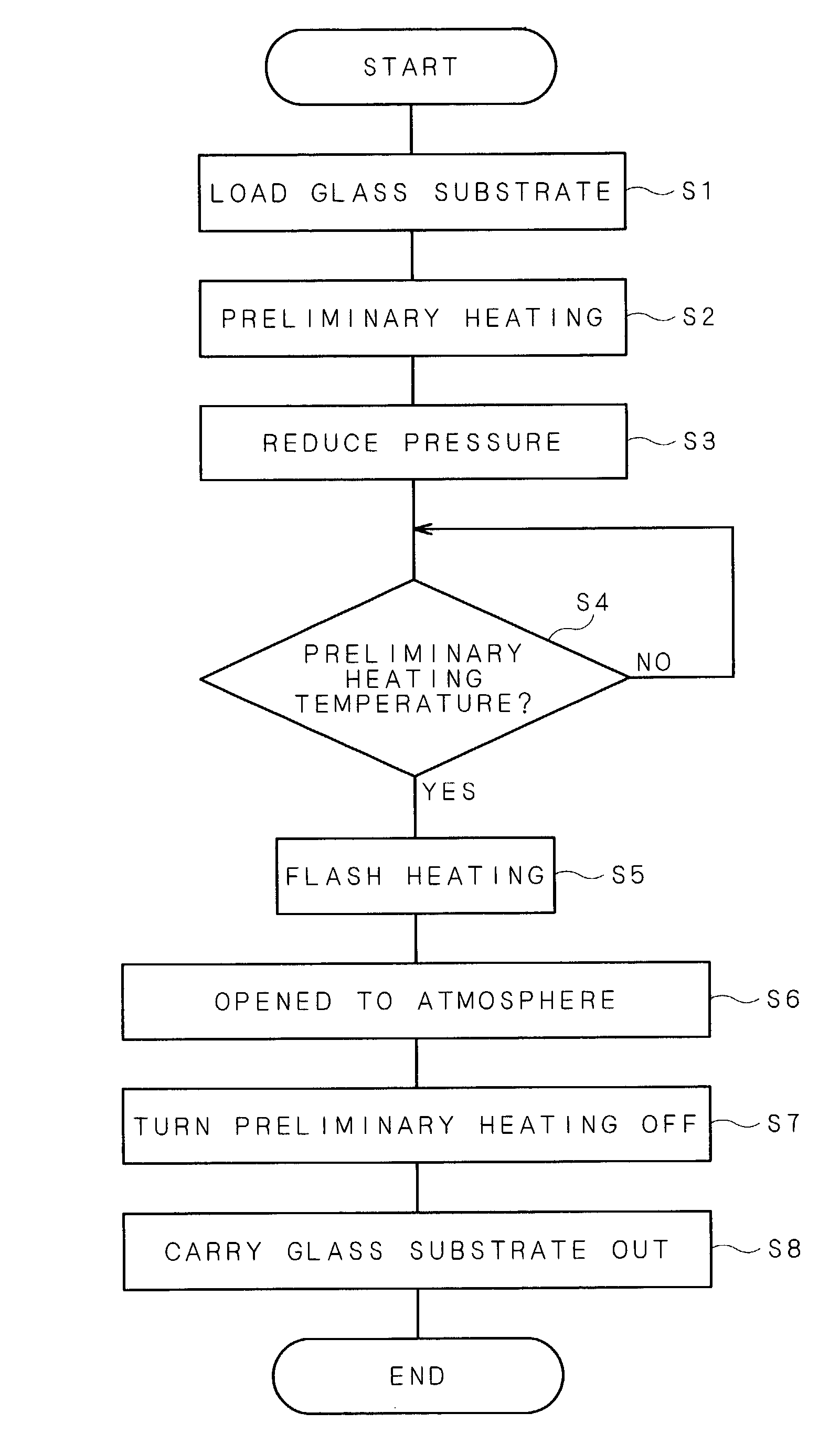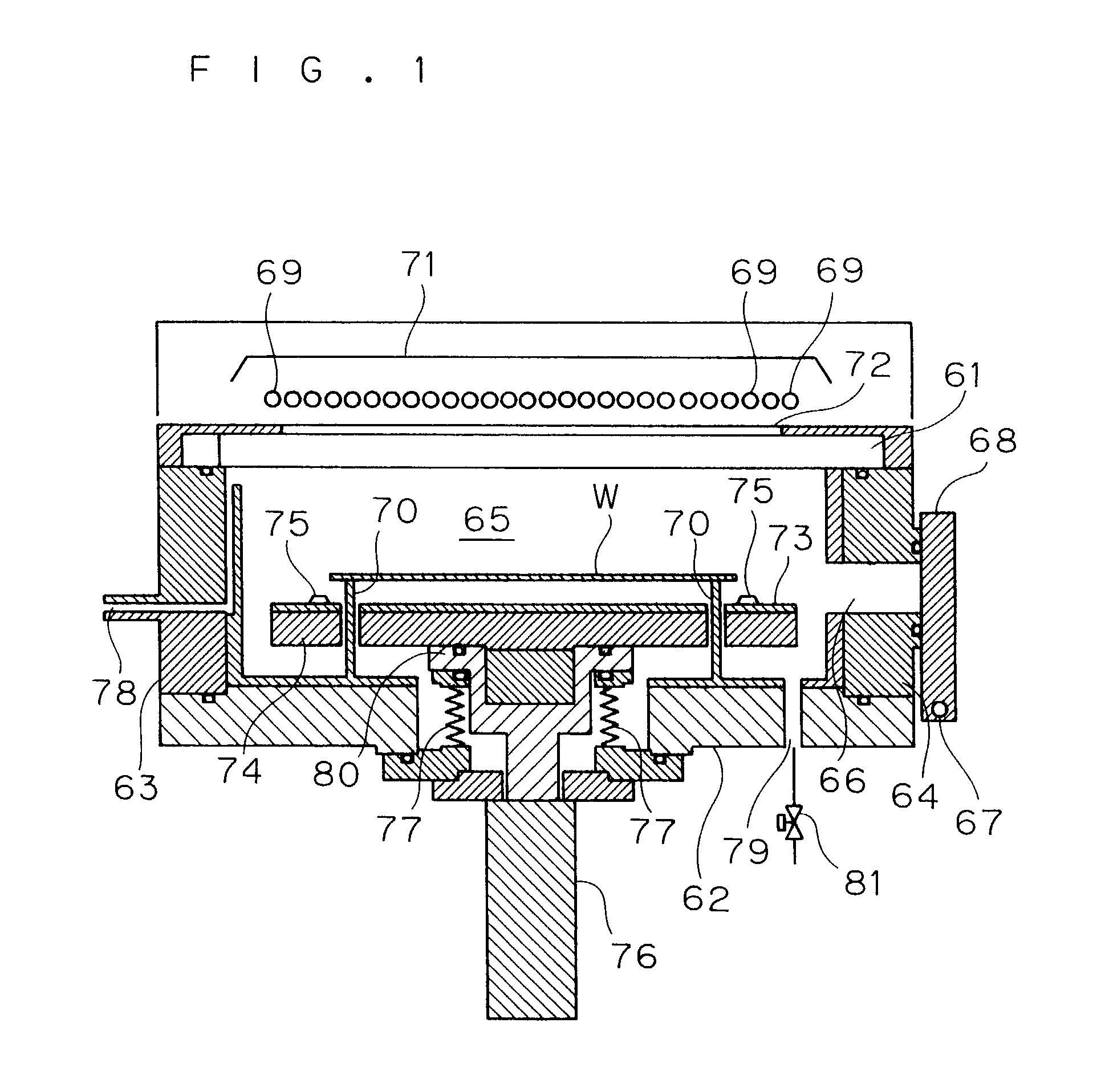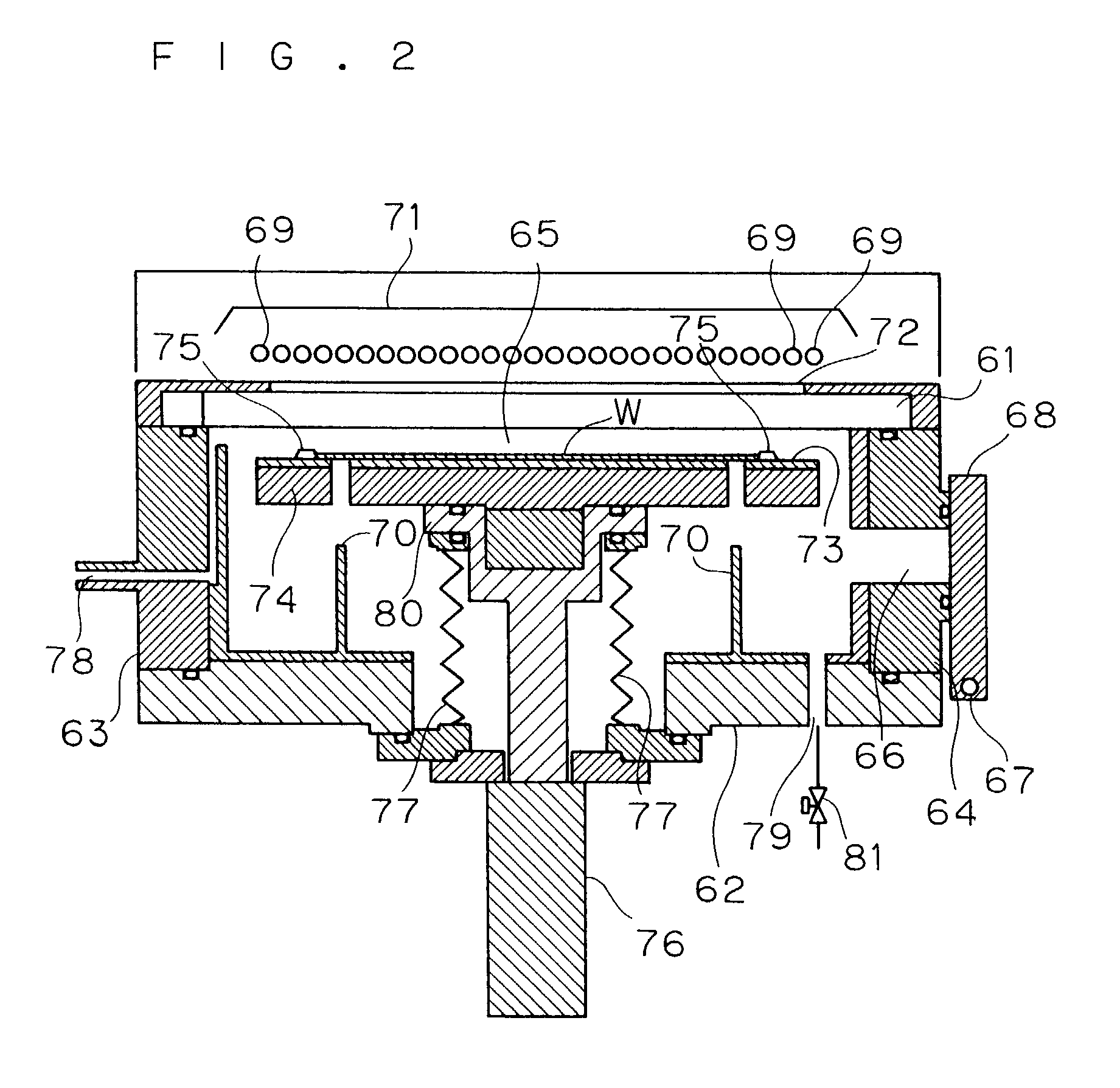Heat treatment apparatus and heat treatment method of substrate
a heat treatment apparatus and substrate technology, applied in glass tempering apparatus, manufacturing tools, instruments, etc., can solve the problems of high defect rate, difficult semiconductor device manufacturing, and inability to obtain thin-film transistors, so as to prevent deterioration in parts, easy to form semiconductor elements, and good substrate characteristics
- Summary
- Abstract
- Description
- Claims
- Application Information
AI Technical Summary
Benefits of technology
Problems solved by technology
Method used
Image
Examples
first embodiment
1. First Embodiment
[0040]FIGS. 1 and 2 are cross-sectional views of a heat treatment apparatus in accordance with a first embodiment of the present invention, and FIG. 3 is a schematic plan view thereof.
[0041]This heat treatment apparatus is constituted by a translucent plate 61, a bottom plate 62 and a pair of side plates 63, 64, and provided with a heat treatment chamber 65 in which a glass substrate W bearing an amorphous silicon film formed thereon is housed and subjected to a heat treatment thereon. The translucent plate 61 constituting the heat treatment chamber 65 is made of a material such as quartz having an infrared-ray transmitting property. Moreover, supporting pins 70, which penetrates a heat diffusion plate 73 and a heating plate 74, which will be described later, and supports the glass substrate W from its lower face, are formed on the bottom plate 62 constituting the heat treatment chamber 65 in a manner so as to stick out therefrom.
[0042]Moreover, an opening section...
second embodiment
2. Second Embodiment
[0079]FIG. 7 shows a cross-sectional view of a heat treatment apparatus in accordance with a second embodiment of the present invention, and FIG. 8 is a schematic plan view thereof. Further, FIG. 9 is an enlarged view showing the inside of the heat treatment apparatus of the second embodiment.
[0080]This heat treatment apparatus, which is constituted by an upper plate 161, a bottom plate 162 and a pair of side plates 163, 164, is provided with a heat treatment chamber 165 which houses a glass substrate W having an amorphous silicon film formed thereon as a substrate to be treated therein, and caries out a heating treatment thereon. The respective plates 161, 162, 163, 164 constituting the heat treatment chamber 165 are made of a material, for example, stainless steel, and the surface of each of the plates is polished so as to prevent deformation due to heat radiation during the heat treatment process by flash light, which will be described later. Moreover, a trans...
third embodiment
3. Third Embodiment
[0130]Referring to FIG. 13, the following description will discuss a third embodiment of the present invention. FIG. 13 is an enlarged view that shows an essential portion of the inside of a heat treatment apparatus in accordance with the third embodiment.
[0131]In this arrangement, a flash heating part 180 and a pre-heating part 190 are not placed in a tilted manner in the same direction (upstream side in the transporting direction F in the second embodiment) with respect to a normal line L2 in light irradiation area M1, and the pre-heating part 190 is placed at a position dislocated from hypothetical line L1 of the flash heating part 180 so that these are not exposed to the mutual irradiation light rays. With this arrangement, the first detector 195 can be placed in the proximity of the flash heating part 180 on the surface side of the glass substrate W; therefore, the layout position forms a position that is hardly susceptible to influences of the irradiation li...
PUM
| Property | Measurement | Unit |
|---|---|---|
| thickness | aaaaa | aaaaa |
| temperature | aaaaa | aaaaa |
| temperature | aaaaa | aaaaa |
Abstract
Description
Claims
Application Information
 Login to View More
Login to View More - R&D
- Intellectual Property
- Life Sciences
- Materials
- Tech Scout
- Unparalleled Data Quality
- Higher Quality Content
- 60% Fewer Hallucinations
Browse by: Latest US Patents, China's latest patents, Technical Efficacy Thesaurus, Application Domain, Technology Topic, Popular Technical Reports.
© 2025 PatSnap. All rights reserved.Legal|Privacy policy|Modern Slavery Act Transparency Statement|Sitemap|About US| Contact US: help@patsnap.com



